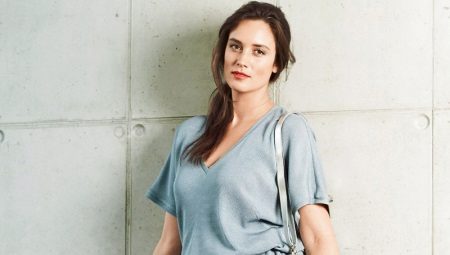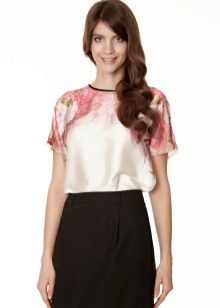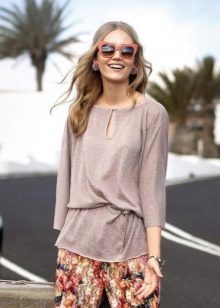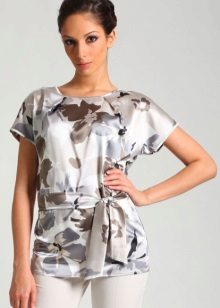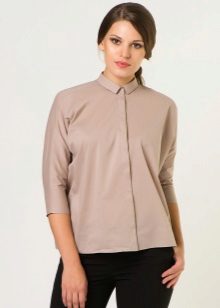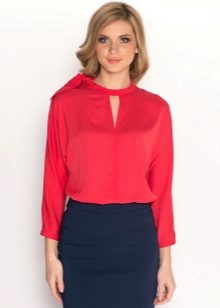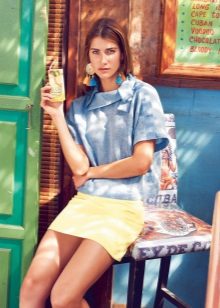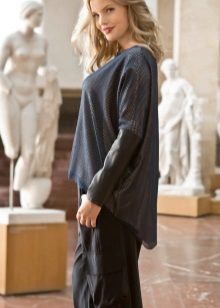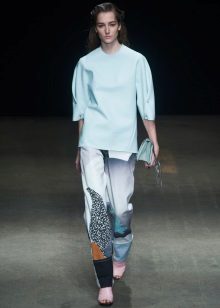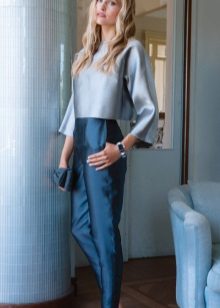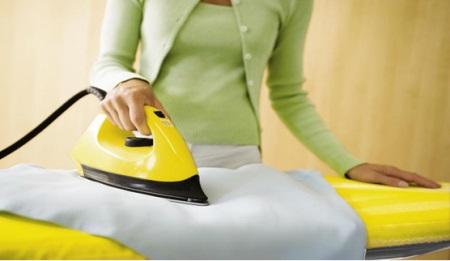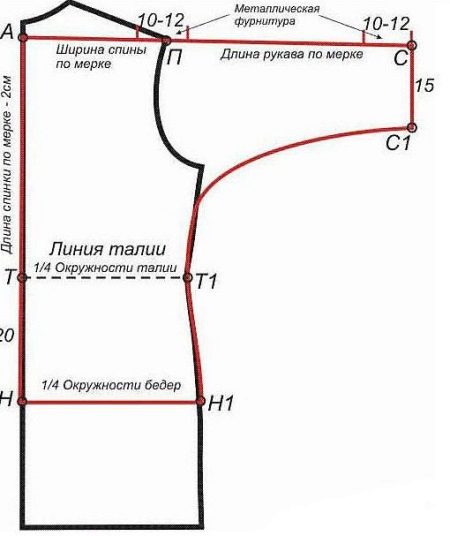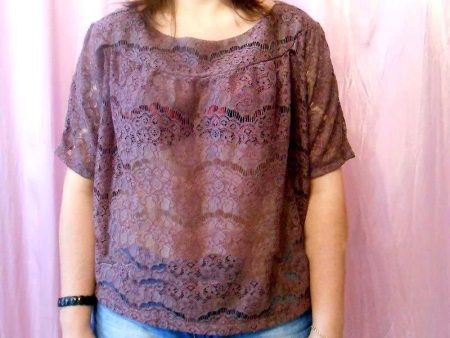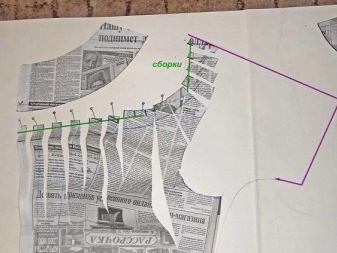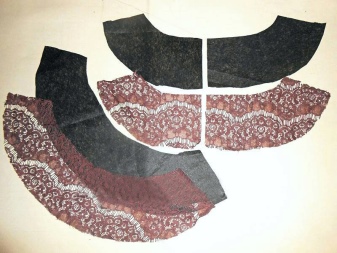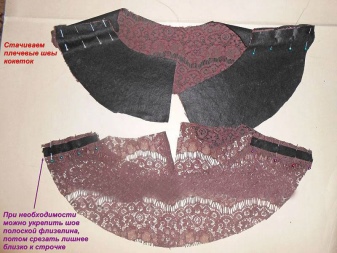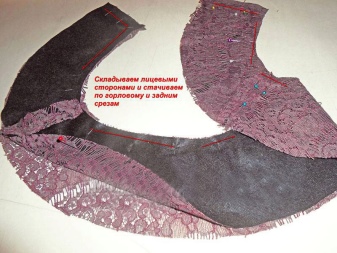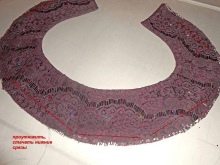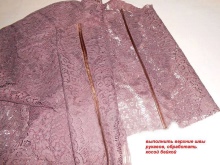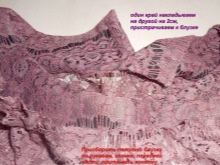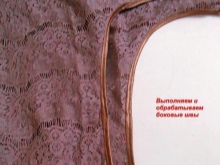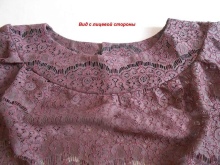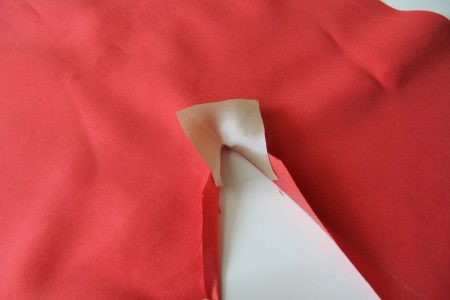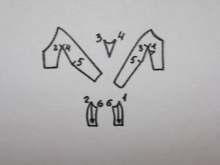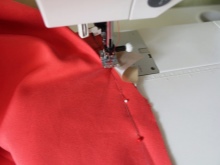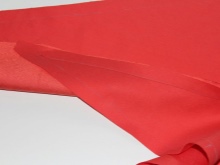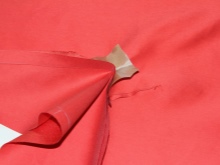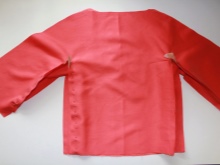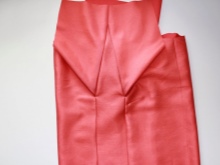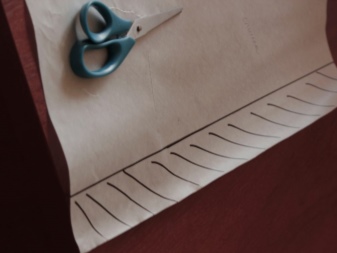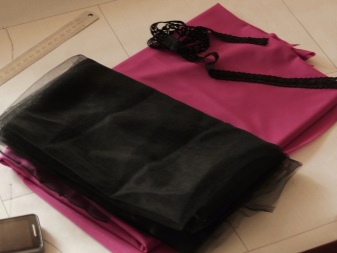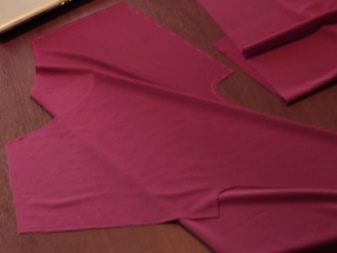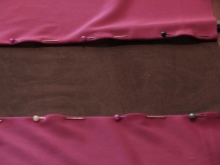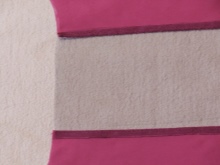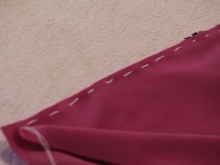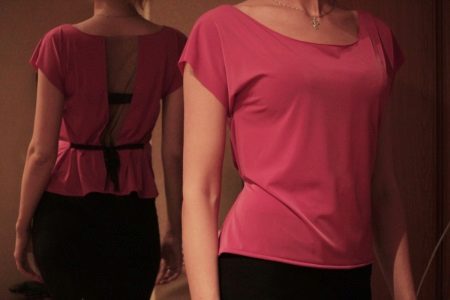Blouses with one-piece sleeves are suitable for absolutely everyone, and especially for girls with full hands. They are suitable for any occasion, because they sew them from various monophonic and colored fabrics.
The most popular are:
- Summer options with floral prints.
- Blouses to create a business image.
- Knitted blouses for work and leisure.
Let's take a step-by-step look at tailoring practical and cute models of blouses with one-piece sleeves.
The choice of fabric
In order for the blouse to be worn for a long time, it is necessary to carefully select the material from which you are going to sew:
- First of all, it is worth refusing colors that are out of tune with your appearance.
- It is also important to determine for what event the blouse is intended, with what things from the wardrobe it can be combined, how practical the fabric is in the care.
- An important point - people with little experience in cutting and sewing should not choose capricious materials, such as velvet, chiffon, loose, with intricate patterns, sequins or embroidery.
Fabric decoding
If you choose a material from natural fibers, then before sewing it should be seated. To do this, iron it with a warm iron through a damp cloth. You can cut only after the full material.
Forced shrinkage is necessary to ensure that the stitched blouse does not sit down during the wash and remains of the required size.
Taking measurements and pattern
The construction of patterns begins with taking measurements and determining the size of the jacket. The main indicators here are:
- chest circumference. It is measured on the most convex points of the chest and shoulder blades. To build takes half the value;
- length of the product. Determined from the back of the seventh cervical vertebra to the approximate lower edge;
- the length of the sleeve. From the place of articulation of the forearm and shoulder.
The picture shows the main pattern for all models. People with elementary skills can initially draw it on a piece of paper, and after all measurements transferred to tracing paper or graph paper.
When building you should not forget about allowances for freedom of movement. For thin, flowing matter - from 10 cm and more. For dense or hard draped - no more than 10 cm. The standard bevel of the shoulder is 2-2.5 cm.
Seam allowances:
- on the neck - 1 cm;
- on the bottom of the product - 4 cm;
- on the seams - 1.5 cm.
Excellent shoulder fit is a guarantee of a good fit. You can determine the correct shoulder line by dress, shirt or blouse without shoulder pads. It is necessary to put on and chop the product on the sides, middle of the back and front, so that it fits tightly on the torso.
Then fasten the needles line along the shoulder as you lay the line. Mark the point of the base of the neck and the point of connection of the shoulder with the hand. Focusing on the reflection, outline the contour of the neck, cut off the excess around the circumference of the neck and the contour of the shoulder. The seam allowance should be left only on the shoulder at 1-1.5 cm, it is not necessary to leave it on the neck - it will be better to see the winning cutout form.
Modeling a blouse with a yoke
The pattern of the blouse is modeled as follows:
- Looking at the reflection in the mirror, they determine the line of the location of the coquette, measure its height.
- Mark the position and dimensions on a paper layout and cut off the line.
The yoke is used for cutting in unchanged form. Only over the entire length 1.5 cm is added, in the form of an allowance. Detail cut out twice, as it is more rigid than the rest of the blouse.
After separation of the coquette from the main pattern, the contour is extended on the integral pattern in order to increase the width of the parts and subsequent laying in the folds or clamping.
In the process of joining, they make an fitting and, if necessary, change the distribution of the surplus, which should be equally distributed, taking into account the peculiarities of the figure. Coquette and assembly together add an image of femininity and softness. Slender girl these details will give pomp, and have a full hide extra.
Gusset for a perfect fit
Our silhouette has one problem - the material under the arm is experiencing the greatest tension, and the tolerances on the seams in places where the curvature is ugly are collected. If you make notches, it increases the likelihood of rupture of the material in this place.
When sewing jackets with long sleeves or large size, the risk increases several times. To loosen the tension, it is required to sew a gusset, that is, a small rhombus from the underlying fabric, into a difficult place.
When sewing, the tops of the sharp corners are directed to the bottom of the blouse and sleeves, and the tops of the obtuse are aligned with the fusion angles of the front and back.
Sewing blouses
- If the lower part of the sleeves is stitched with the same cloth, the minimum allowance is 3–4 cm; if it is processed by turning, the stock will be equal to 1 cm.
- Before stitching, it is required to brush over the undercut of the sleeve on the shelf and back so that the edges do not crumble.
- Then do tucks. After this, the back and front are joined by the outer sides inward and swept over the humeral and sleeve sections. Connect the back with the front edge of the undercuts. From their end, they cut away and sweep away the lower sections of the sleeves in front and back.
- By the first fitting gusset can not stitch. When fitting, care should be taken that the seams of the sleeves and shoulders are not moved forward or backward. After fixing all the shortcomings proceed to sewing. Sew down side, shoulder, as well as upper and lower sections of the sleeves. Stitches are smoothed and swept.
- The gusset is sewn into the undercut only after the strike and the stripping of the seams. The edge of the crotch fold with the undercut of the shelf and the back face down. Sharpen the rhombus from the side of the blouse so that the seam tolerances are minimal at the corners in order to avoid wrinkles. For reliability in the corners, you can put a piece of cloth under the line. The crotch seam is laid out on both sides and otglazhivayu.
Blouse with an insert on the back
The transparent insert on the back is simple. On the prepared pattern, move away from the fold of 3 or 5 centimeters at the bottom and top, then draw a line.
Cut the resulting strip and open the transparent insert. From the main fabric, uncover the front and two back details.
It remains to get all the details.
